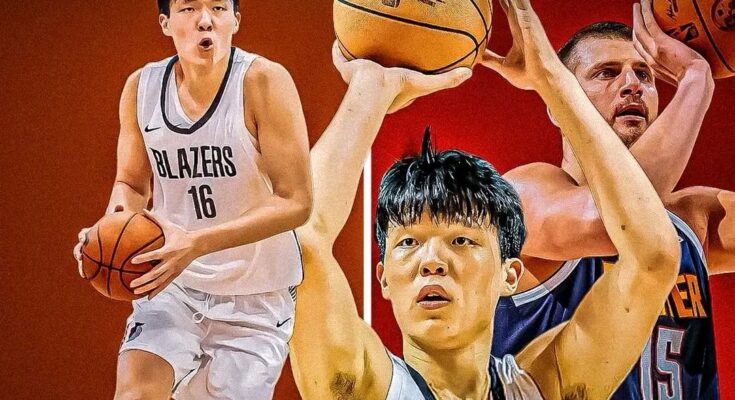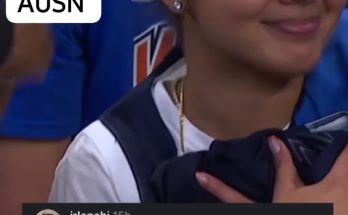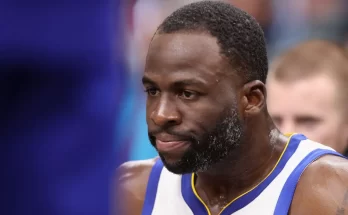Yang Hansen was the standout Summer League player, not Cooper Flagg.
Flagg did look impressive (in a small sample size), but that was to be expected. He was selected first overall.
Yang Hansen’s emergence as the standout player of the NBA Summer League was an unexpected but captivating development in a preseason period that many assumed would be dominated by Cooper Flagg. The attention heading into Summer League was overwhelmingly focused on Flagg, the highly touted number one overall pick whose high school dominance and subsequent draft selection had made him the most anticipated debut in years. The NBA, media, and fans all collectively expected Flagg to immediately set the Summer League ablaze, and in his limited minutes, he certainly showed flashes of the brilliance that made him a top pick. His athleticism, versatility, and court awareness were all on full display. However, it was Yang Hansen, a relatively lesser-known international prospect, who stole the spotlight with consistently exceptional performances that went beyond just one or two exciting plays. Over multiple games, Hansen proved he belonged—not just in the Summer League conversation—but in the future plans of whichever team was lucky enough to take a chance on him.
Hansen’s rise was a result of consistent execution, basketball IQ, and a level of poise rarely seen in young players making their North American debuts. While Flagg had a strong showing in his debut and then was carefully rested or limited by his team, Hansen played heavy minutes and delivered across the board. His per-game averages—hovering near a double-double with strong shooting percentages—were only part of the story. He played with a maturity and calm that steadied his team. At 6’10”, Hansen operated as both a stretch big and a facilitator at the elbow, showing off a soft touch from midrange and three, and an uncanny ability to pass out of double teams. In a league where big men are often evaluated solely on their rebounding and rim protection, Hansen brought a more modern, European-influenced style of play, similar in spirit—though certainly not identical—to what the NBA has come to expect from elite international bigs like Nikola Jokić.
Defensively, Hansen held his own as well. While not an elite rim protector in the mold of Flagg or Victor Wembanyama, he played smart positional defense, rotated well, and communicated constantly. He showed an understanding of team defensive schemes that was far beyond what one might expect from a Summer League newcomer. That said, what truly set Hansen apart wasn’t just numbers or tactics—it was his presence. Every game he played seemed to take on a different energy. His teammates responded to his leadership, and the crowd, initially indifferent to him, began to murmur and buzz every time he checked in.
By contrast, Flagg’s brief but effective stints raised eyebrows, but also felt more like confirmation of what was already known. Yes, he was explosive. Yes, he had the court vision and defensive instincts. Yes, he had the tools to be a franchise cornerstone. But there was no revelation in his Summer League performance—only affirmation. This is not a knock on Flagg, whose upside remains sky-high and whose cautious usage may well prove wise in the long run. But the Summer League is, in many ways, about the players who force you to reconsider what you thought you knew. And that’s what Yang Hansen did, night after night.
Hansen’s journey to the Summer League wasn’t paved with hype or viral mixtapes. He played in relative obscurity compared to American high school and college stars. His decision to enter the NBA draft was seen as premature by some analysts, and there were questions about whether his game would translate to the NBA’s pace and physicality. But those doubts were erased with each game he played in Las Vegas. His handle was tight enough to bring the ball up in transition. His passing vision allowed him to operate like a point-forward in half-court sets. And his motor never stopped—he chased rebounds, contested shots, dove for loose balls, and never took a possession off.
What further elevated Hansen’s stock was his ability to adapt. In early games, he played more as a traditional big, rolling to the rim, rebounding, and setting screens. As the Summer League progressed, and teams began to key in on him, he adjusted—stepping out to the three-point line, making skip passes out of doubles, and initiating offense himself. His versatility made him a matchup nightmare, and his ability to read the defense quickly and react made him invaluable. Coaches at every level value adaptability, and Hansen displayed that trait more than any other young player in the tournament.
Analysts began to take notice. Initially a curiosity—“Who is this guy?”—he became the centerpiece of multiple scouting reports and daily sports talk discussions. ESPN segments dedicated airtime to breaking down his film. Former players and coaches began to weigh in, noting his footwork, patience in the post, and feel for the game. Some compared his rise to that of other overlooked European players who later became All-Stars. That might be premature, but it’s undeniable that Hansen altered the trajectory of his own career within the span of two weeks.
Meanwhile, Flagg’s more limited usage left many craving a larger sample size. While his defense and athleticism were never in question, there were moments of overexertion and hesitation on offense. The learning curve for top picks is always steep, and Flagg will surely develop into an NBA star given time and opportunity. But he did not dominate Summer League in the way some had hoped or projected. And again, that’s not a failure on his part—it’s just that the structure and expectations around Flagg didn’t allow for the same kind of surprise that Hansen brought. Flagg is playing the long game. His minutes were managed, his role carefully defined. For better or worse, he was handled with the caution reserved for prized investments, whereas Hansen was given the keys and told to drive. He did.
The contrast in their circumstances highlights a broader tension in how talent is evaluated and developed. Flagg came in as the known commodity, the player with the target on his back. His game was scouted relentlessly. Opponents made it a point to try and shut him down or test his resolve. Hansen, by contrast, flew under the radar, which gave him a chance to grow without the same scrutiny. But instead of merely benefiting from low expectations, he redefined them. This wasn’t a case of someone playing “well for a second-rounder” or “exceeding limited expectations.” Hansen played like the best player on the court, period.
His stats backed that up, but more importantly, his impact did. When he was on the floor, his team ran better offense. When he was off, they struggled. He made everyone around him better, the highest compliment in basketball. Teammates began to defer to him not just because of his performance, but because he had earned their trust. Veterans who’d played years of overseas ball or bounced between G League and 10-day contracts gave him the ball in crunch time. That’s not something that happens by accident.
Another major point in Hansen’s favor was his attitude. Interviews with him were humble, thoughtful, and team-focused. He acknowledged his own growth areas—defensive foot speed, adjusting to quicker guards, getting stronger in the post—but didn’t seem fazed. He projected a quiet confidence that suggested he wasn’t surprised by his own success, only pleased that others were finally seeing it. He praised his teammates, his coaching staff, and even his opponents. In a Summer League environment often marked by players trying to do too much to get noticed, Hansen stood out by doing exactly what the game demanded—and excelling at it.
Of course, the regular season will be the true test. Summer League success doesn’t always translate to NBA stardom. For every breakout Summer League star who blossoms into an All-NBA talent, there are others who fade into obscurity once the big show starts. But based on the skills Hansen displayed—his court vision, touch, poise, and versatility—there’s every reason to believe that he has staying power. His game isn’t built on gimmicks or athleticism alone. It’s built on fundamentals, intelligence, and adaptability. Those traits translate. They last.
In the weeks following Summer League, front office chatter has reportedly been buzzing about Hansen’s rise. Some executives have expressed quiet regret about letting him slide in the draft. Others have begun comparing him to other recent international risers who proved draft day doubts wrong. Scouts have begun requesting additional footage from his international league games, hoping to find signs they missed. But the truth is that players like Hansen often don’t “show” themselves until they are put in a system that lets them shine. Summer League gave Hansen that system, and he made the most of it.
In the end, Cooper Flagg may very well go on to have the more decorated NBA career. He might rack up All-Star selections, All-NBA nods, and even MVP chatter. His physical tools and basketball instincts are that elite. But for this summer, in this moment, Yang Hansen was the story. He wasn’t just impressive “for a rookie” or “for an international player”—he was the most complete, most consistent, most impactful player in Las Vegas. He came into Summer League as a relative unknown and left as a name to remember. And that, more than any hype or draft pedigree, is what Summer League is supposed to be about.



